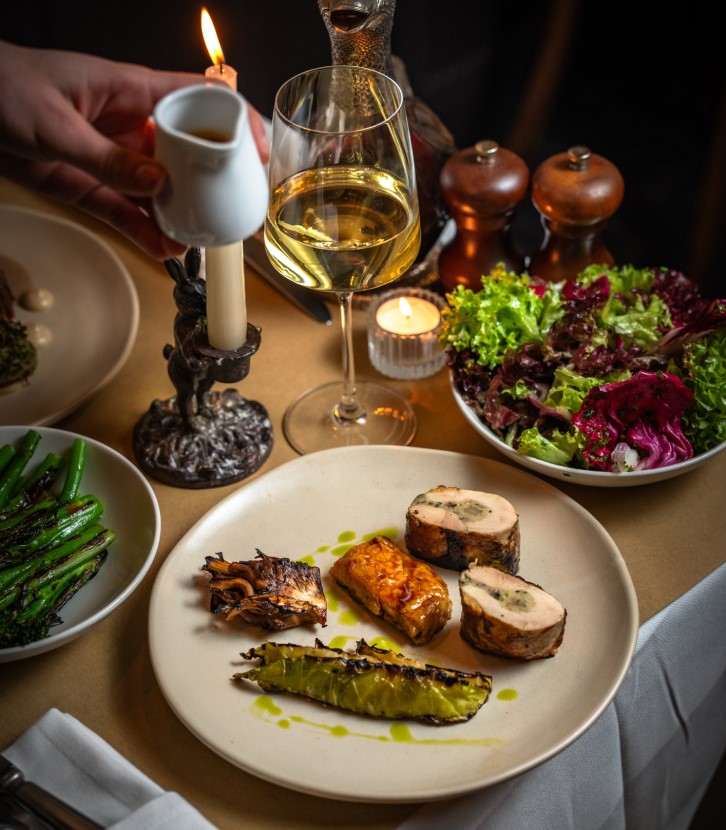Pasta!
Pasta is of course at the top of the list. As you stroll through the narrow streets of the center of Rome, the outside tables of the restaurants are testament to the success of pasta: just stop and watch the amused tourists trying to twist their spaghetti around their forks, in an effort to imitate the typically Italian gesture!
Carbonara is everyone's great love studded with small pieces of crispy guanciale (pork cheek) and a creamy sauce made from eggs and cheese. There is even a day dedicated to this dish – National Carbonara Day, which falls on April 6th.
Guanciale is also found in amatriciana, combined with a tomato sauce, while in pasta alla gricia, the pork is partnered only with cheeses. Finally, if you are not a meat eater, penne all'arrabbiata offers a spicy alternative with a tomato, parsley, and chili sauce.
But it's not all about pasta: gnocchi alla romana are an emblematic dish of Roman cuisine. Roman-style gnocchi do not contain potato; rather they are discs of semolina cooked in milk. To finish with a broth-based primo piatto, arzilla borrows an utterly Roman name for skate – the fish that fleshes out this soup, which also features broccoli.
Quinto quarto and other specialties
Among the secondi piatti (main courses), we have quinto quarto, a name that does not refer to a specific dish but is nevertheless inextricably linked to Roman cuisine. Historically, quinto quarto were the pieces left over for the common people (spleen, lungs, heart, brains, kidneys etc) after the nobles had taken the most sought-after cuts for themselves. Now, a virtue has been made out of necessity: trippa alla romana, coda alla vaccinara (oxtail stew) and coratella, a pan-cooked stew with lamb offal, are exquisite dishes.

Vegetables in the spotlight
In Rome, vegetables often have a starring role in unique dishes, starting with the much-loved artichoke, in the double version alla romana, with oil, garlic, parsley, and mint, or alla giudia. Deep-fried and crispy, they are part of the Judeo-Roman gastronomic tradition and, with their coppery hue, are a culinary masterpiece. Other typical dishes include puntarelle (chicory shoots) salads with anchovies, vignarola (a mixed dish of broad beans, lettuce, artichokes, and peas), pan-fried chicory ripassata and baked tomatoes stuffed with rice.

Roman-style street food
If you're too busy running from museum to museum, Rome also offers a good choice of specialties to enjoy on the go, such as supplì al telefono, rice balls with meat and mozzarella, breaded and fried. You'll immediately understand the reason for the name when you tear a piece off: the melted cheese stretches like an old telephone wire. And if you like fried food, you'll be spoiled for choice, from courgette flowers, plain or stuffed with mozzarella and anchovies, to cod in batter. Porchetta is another option for those in a hurry: pork stuffed with garlic and herbs, then grilled. It is both served in restaurants and used in slices to fill sandwiches to eat on the go.

Saving the best for last
As far as desserts are concerned, the local pastoral tradition – surprisingly you can still see bucolic scenes of flocks of sheep frolicking in the meadows on the outskirts of Rome – provides the main ingredient for a cake called torta ricotta. This specialty of amber-colored shortcrust pastry encasing Morello cherry jam and ricotta, is also part of the Judeo-Roman tradition. Maritozzo, a soft, sweet brioche filled with whipped cream, is also well loved, while pizza cresciuta (which is not actually a pizza, but a sourdough cake) is more associated with Easter.
On hot days, cool off with grattachecca, crushed ice combined with syrup, usually fruit flavored.
Hosteria Grappolo d'Oro
Domenico dal 1968
L'Osteria della Trippa
Trattoria Pennestri
Romanè
Poldo e Gianna Osteria

















